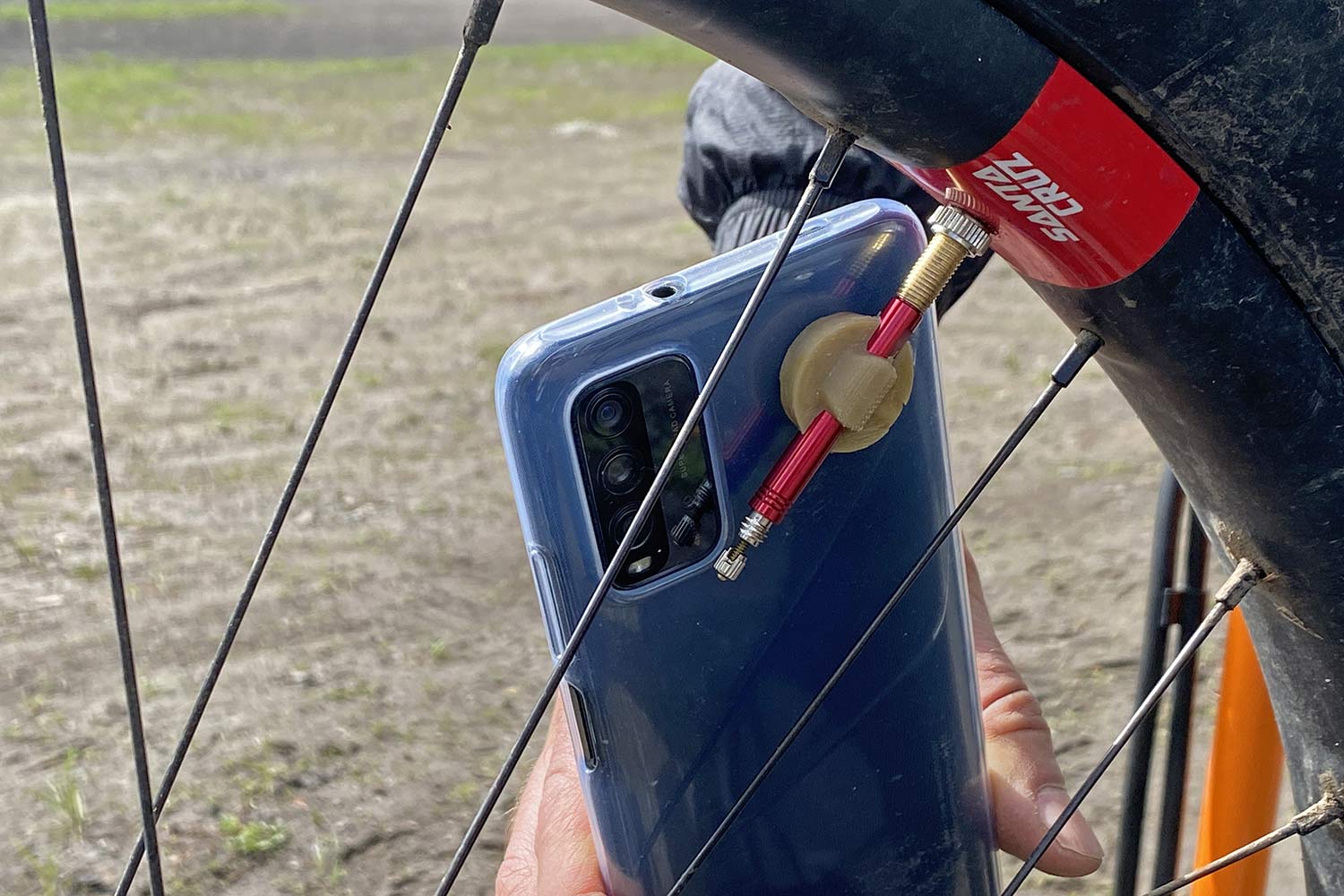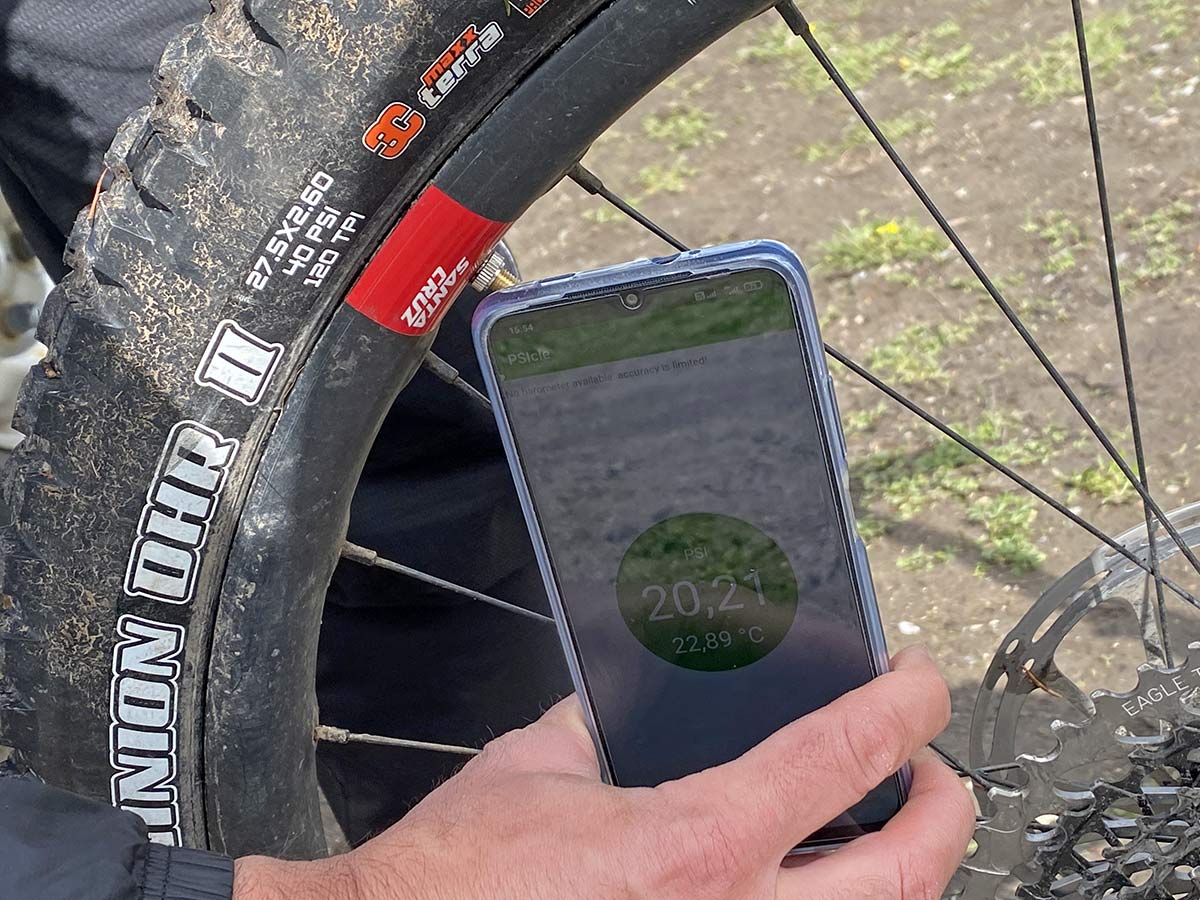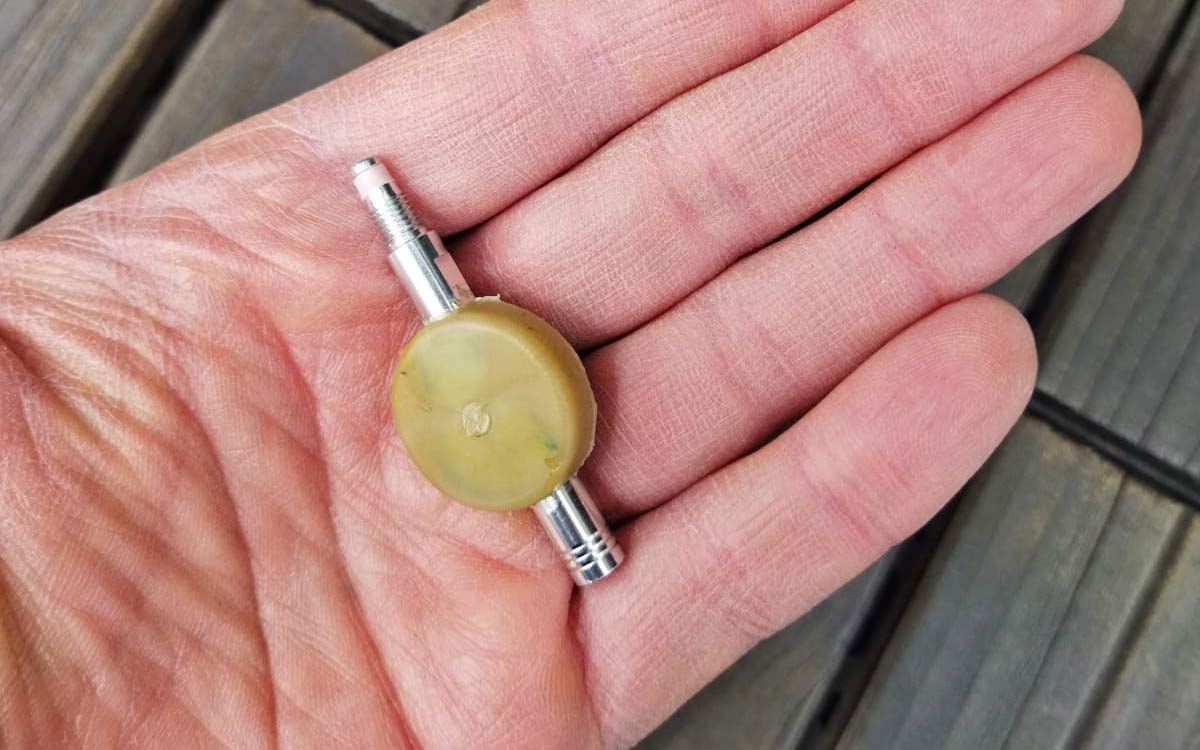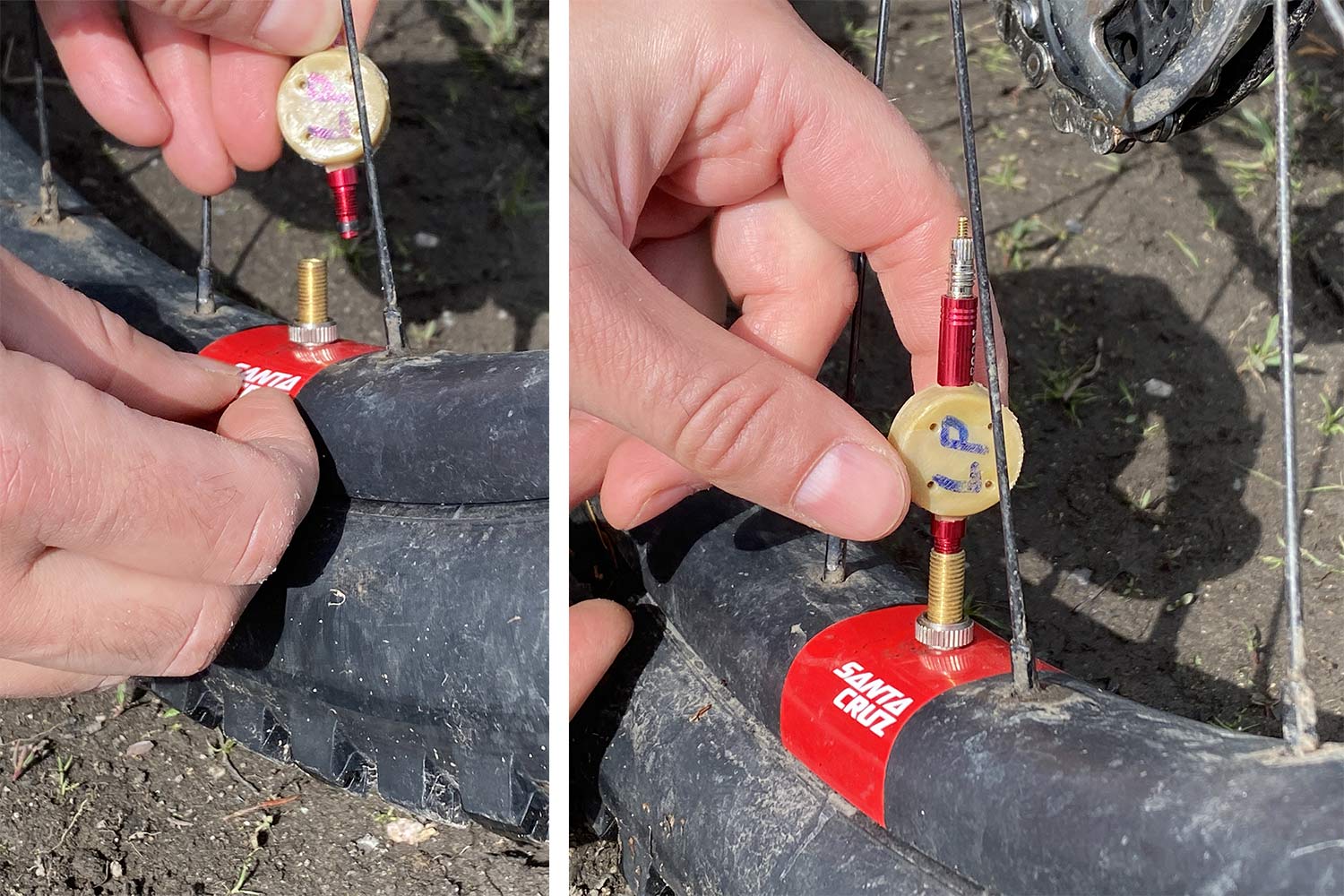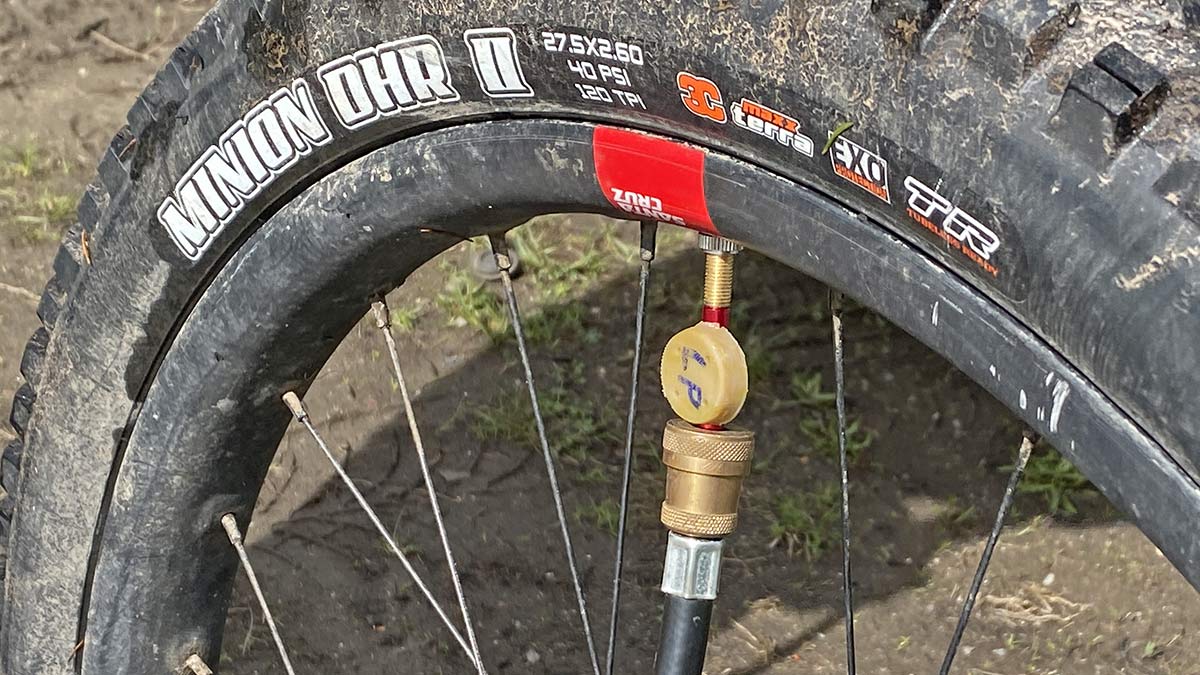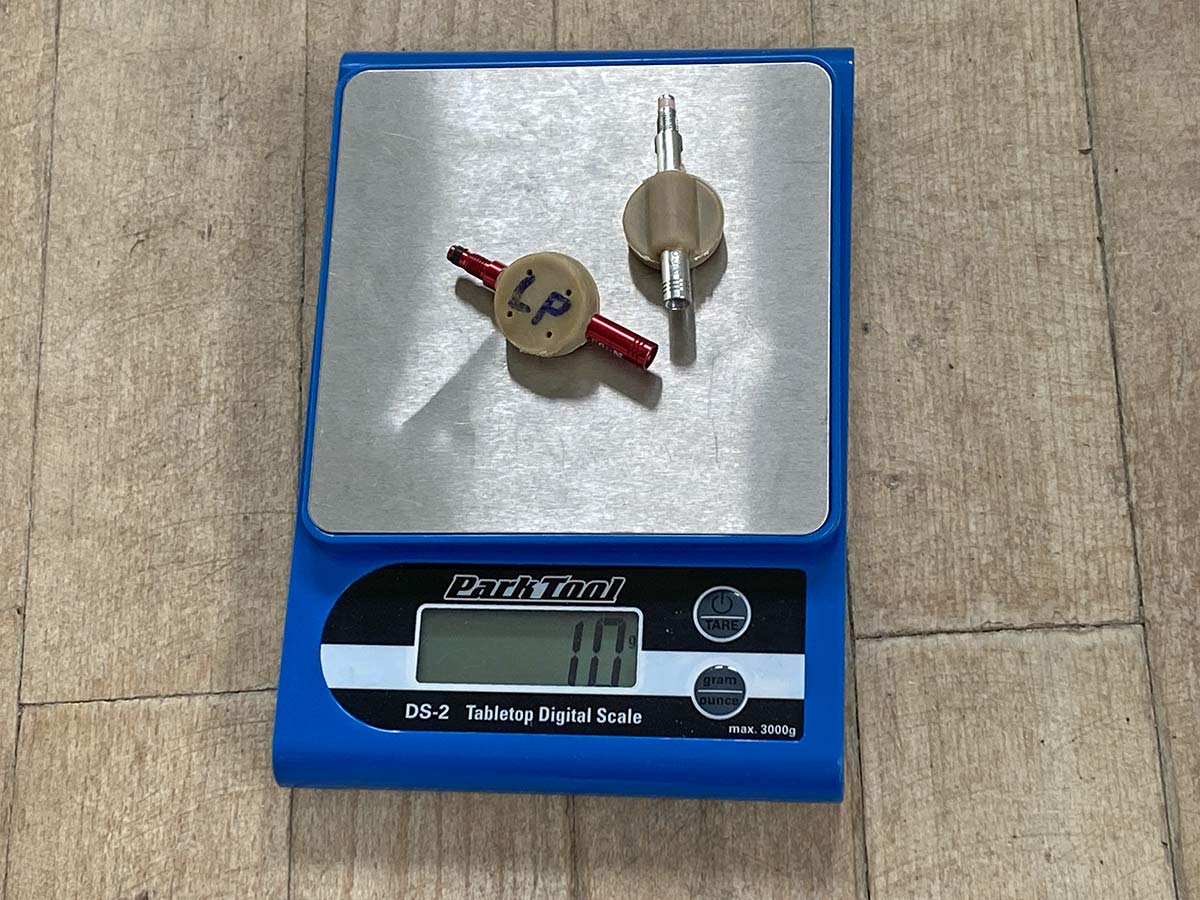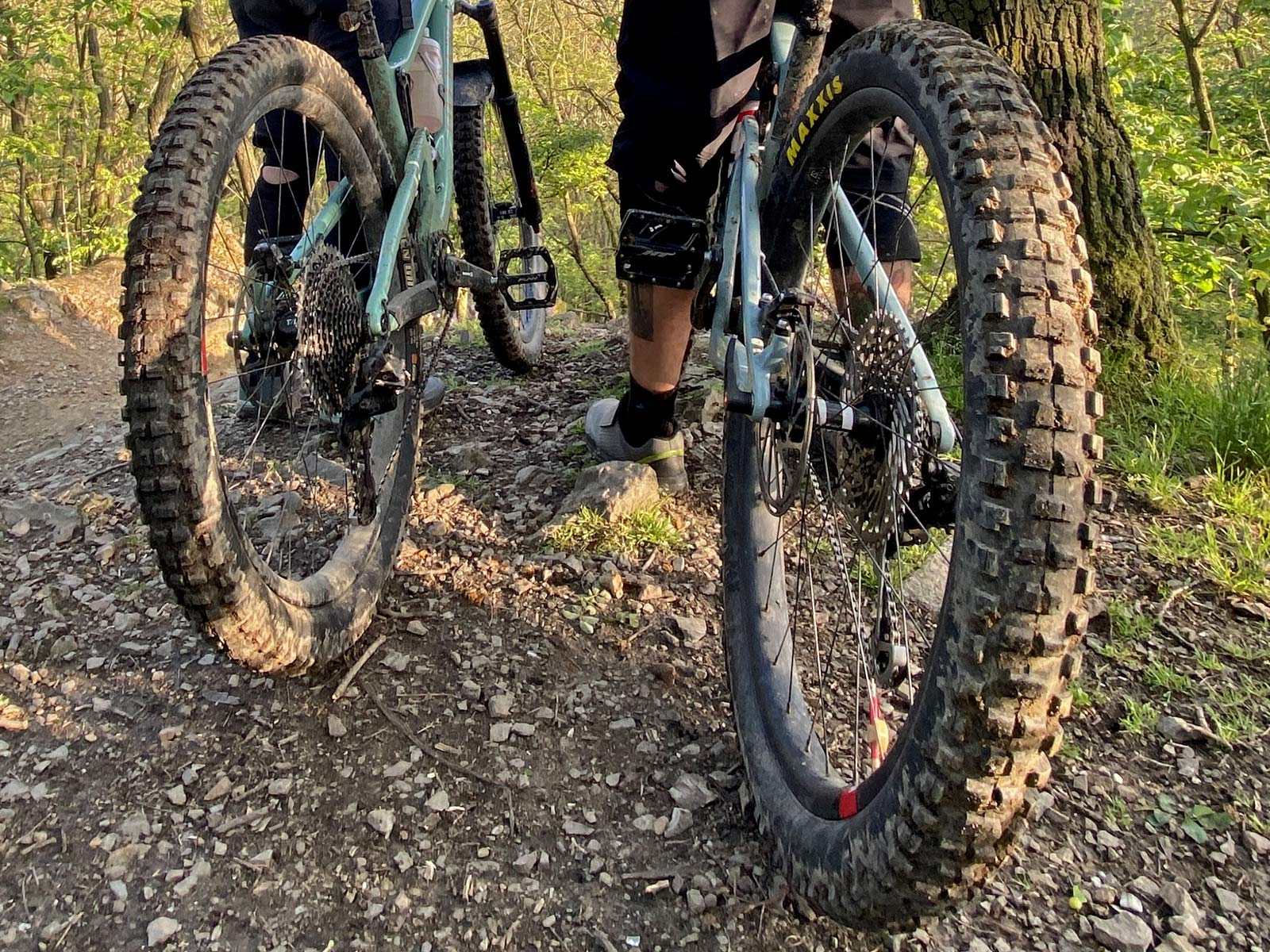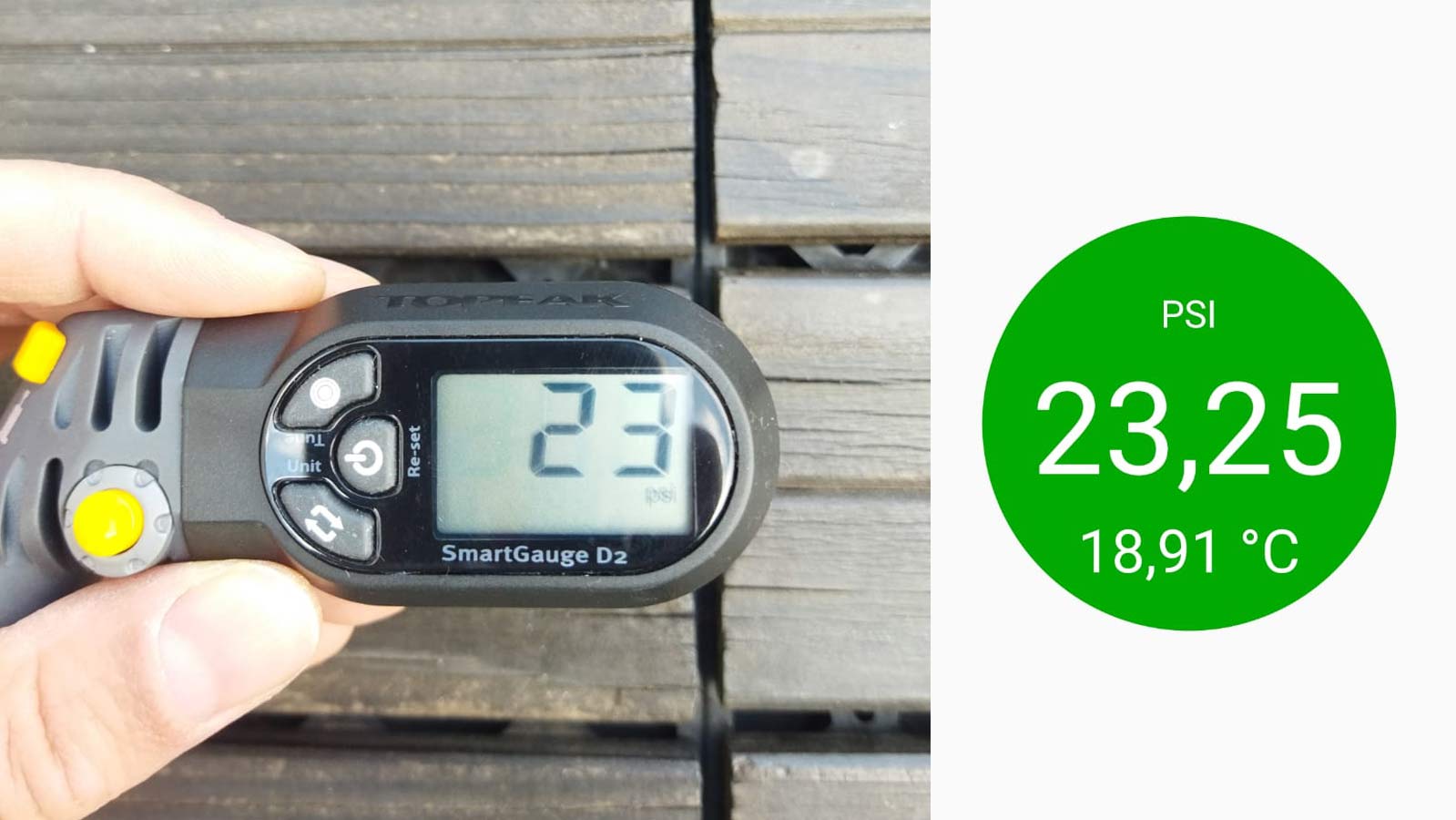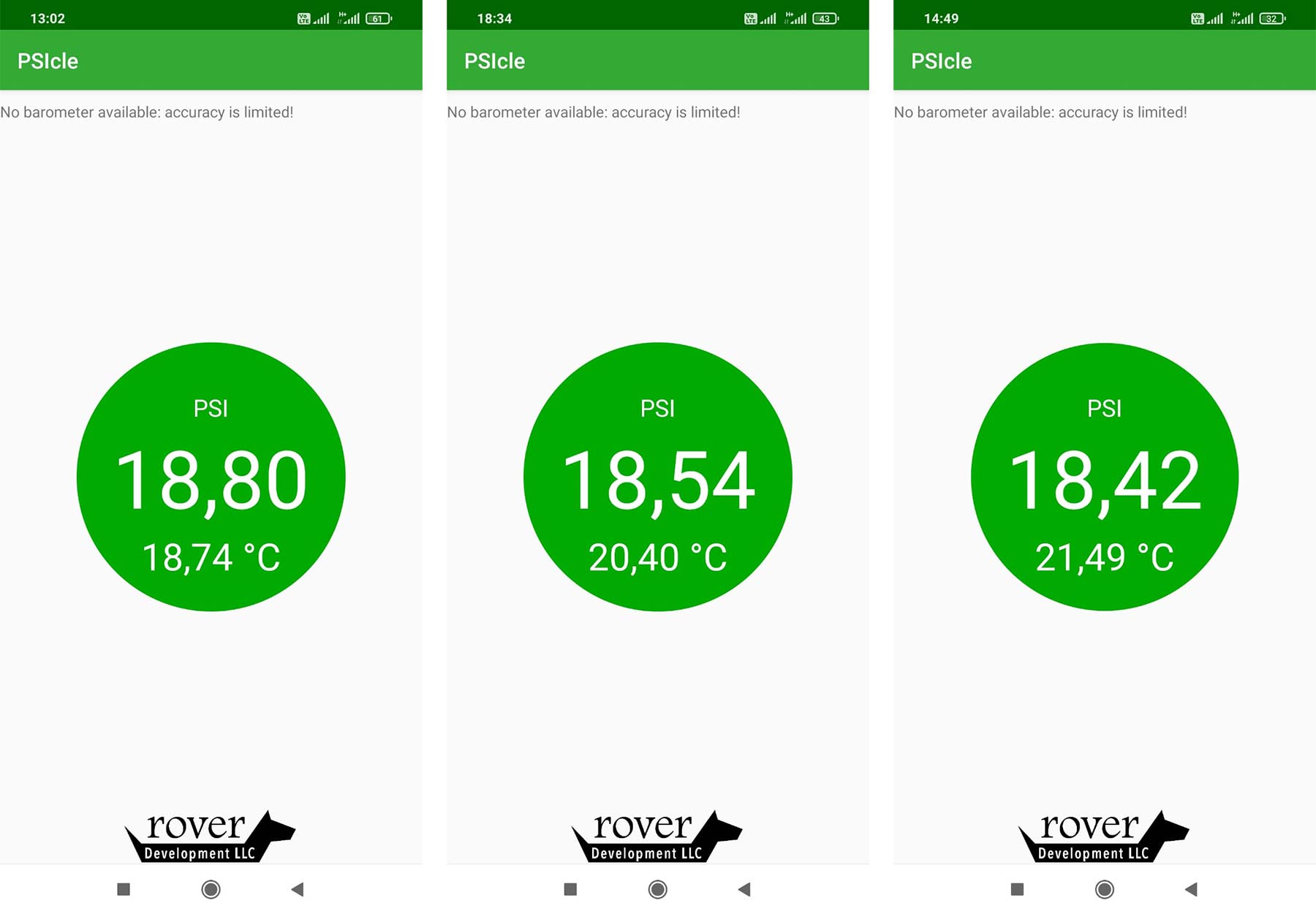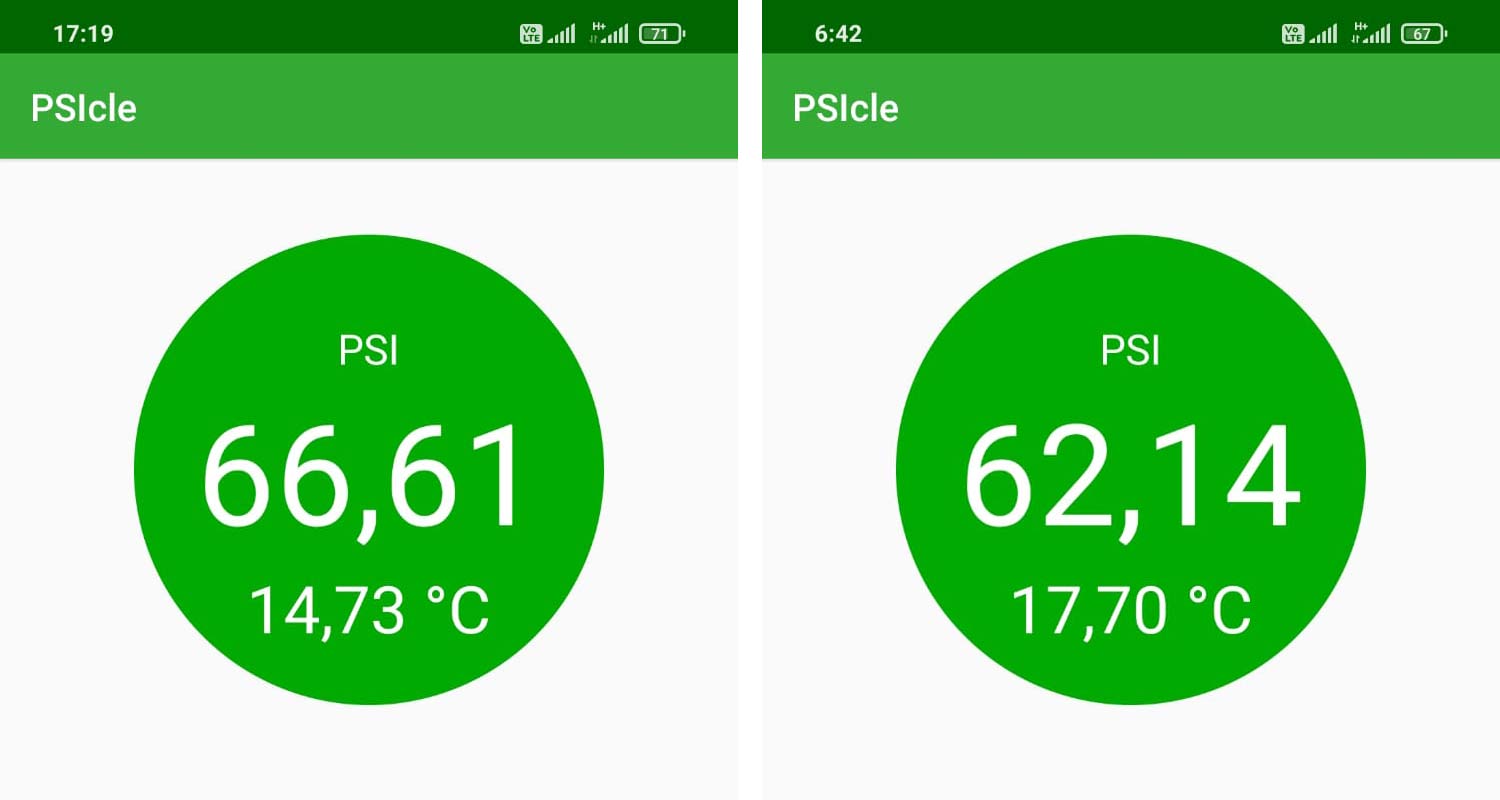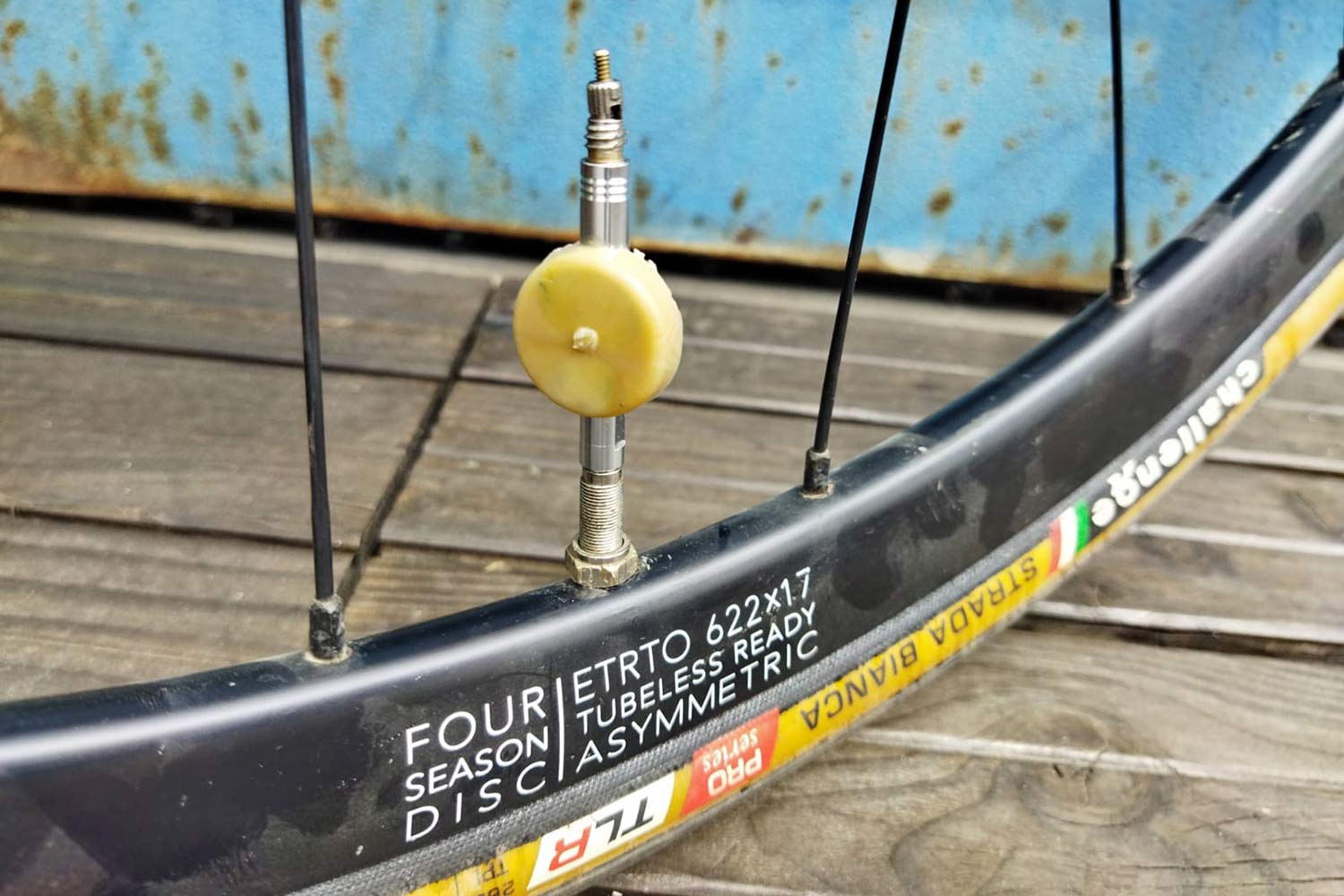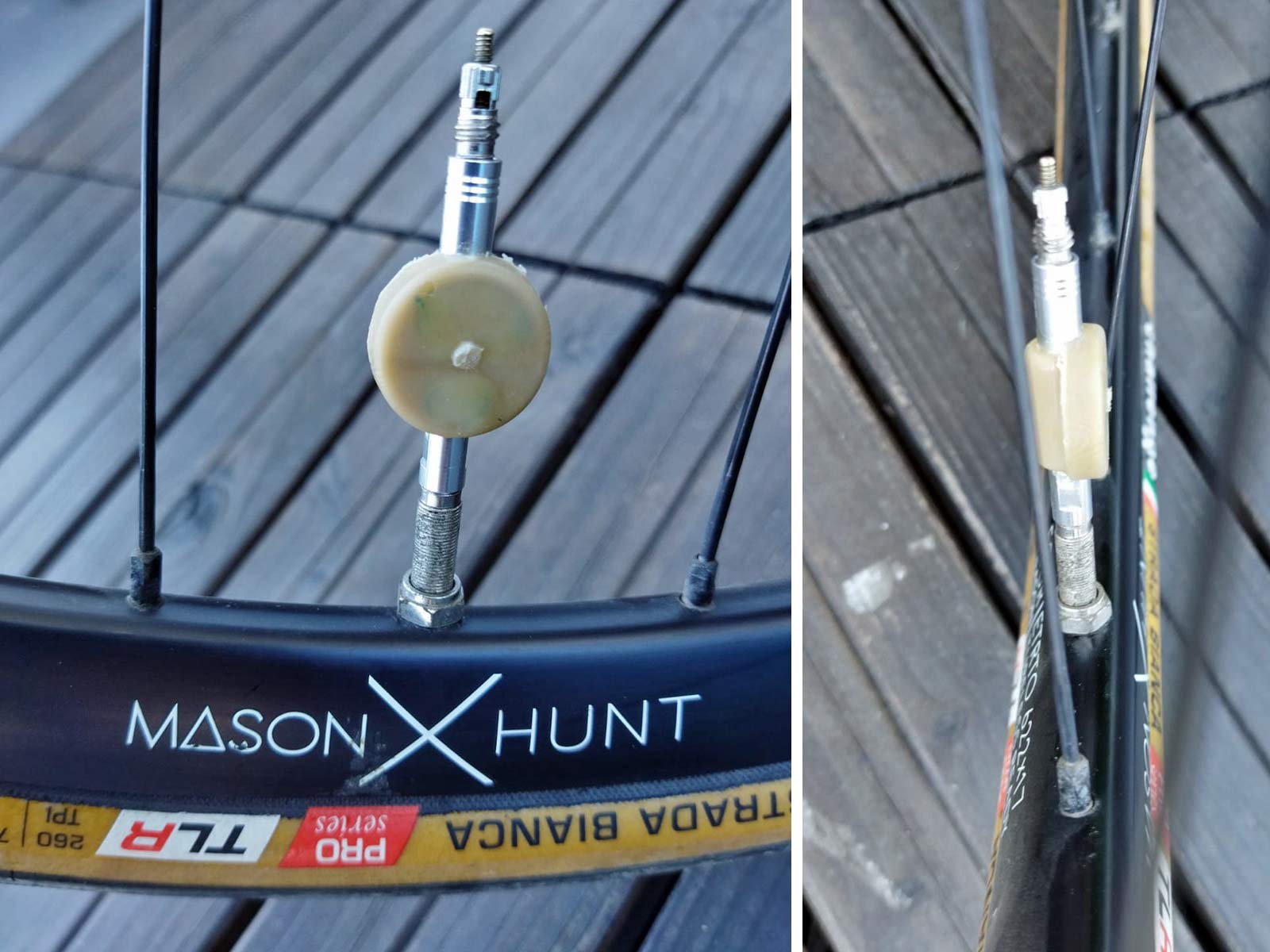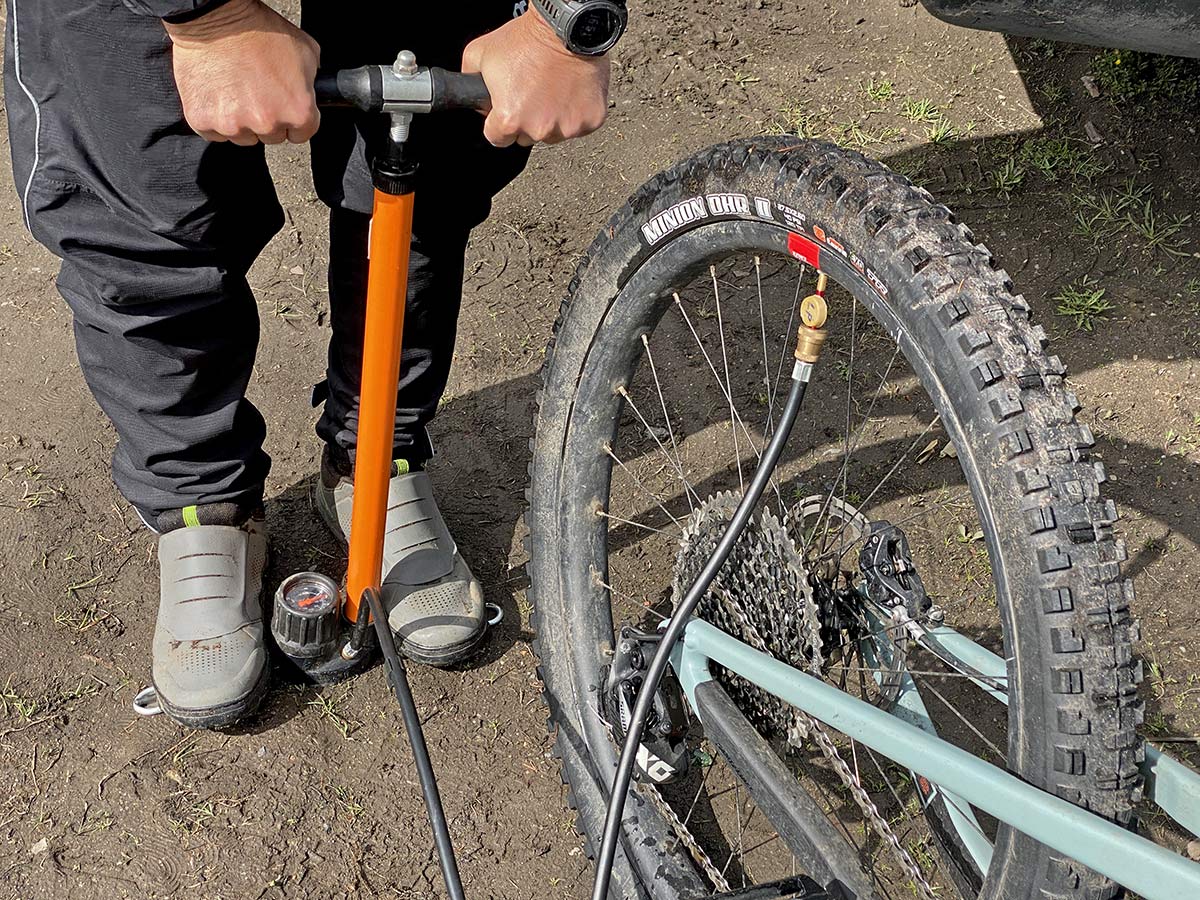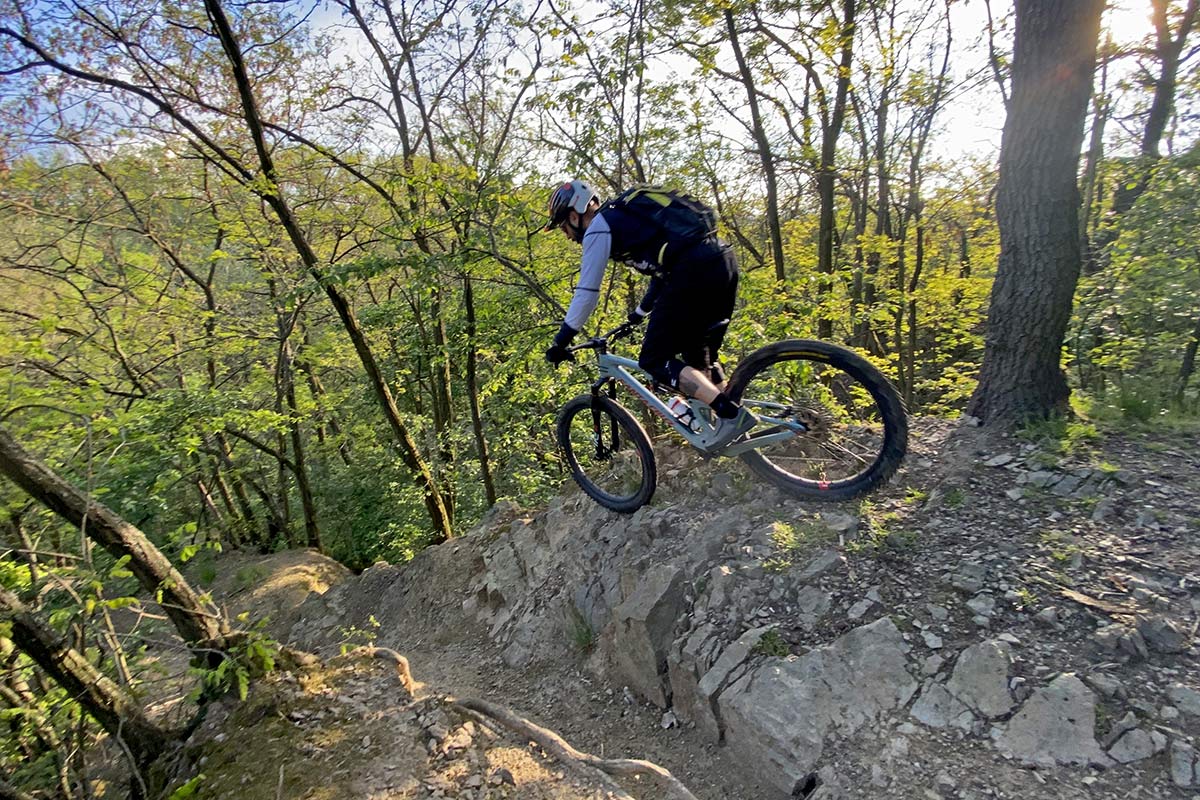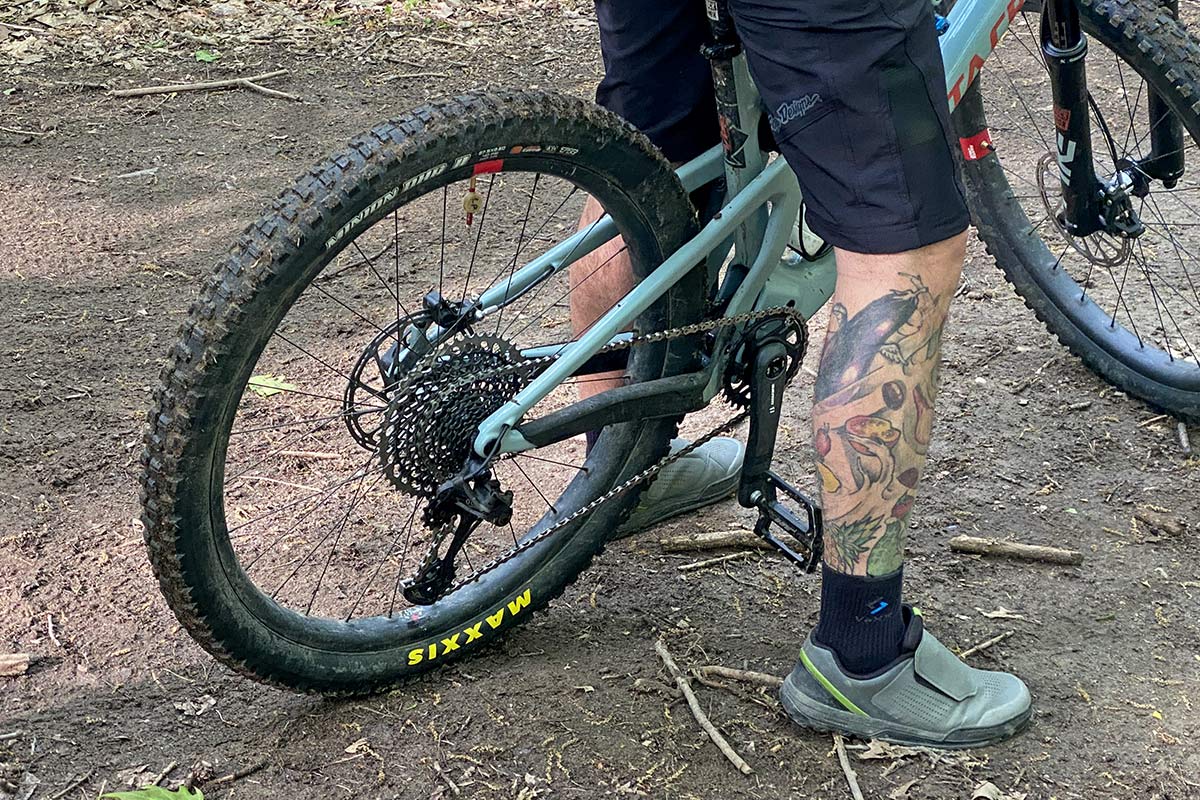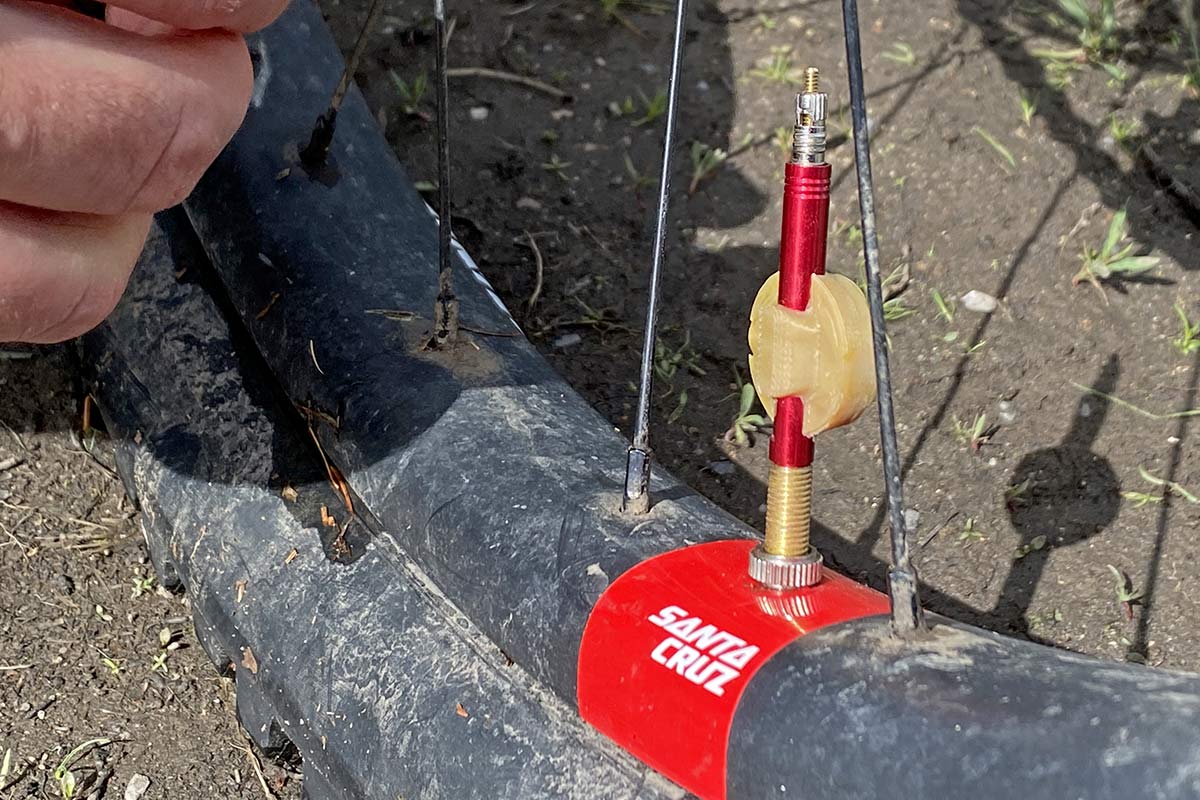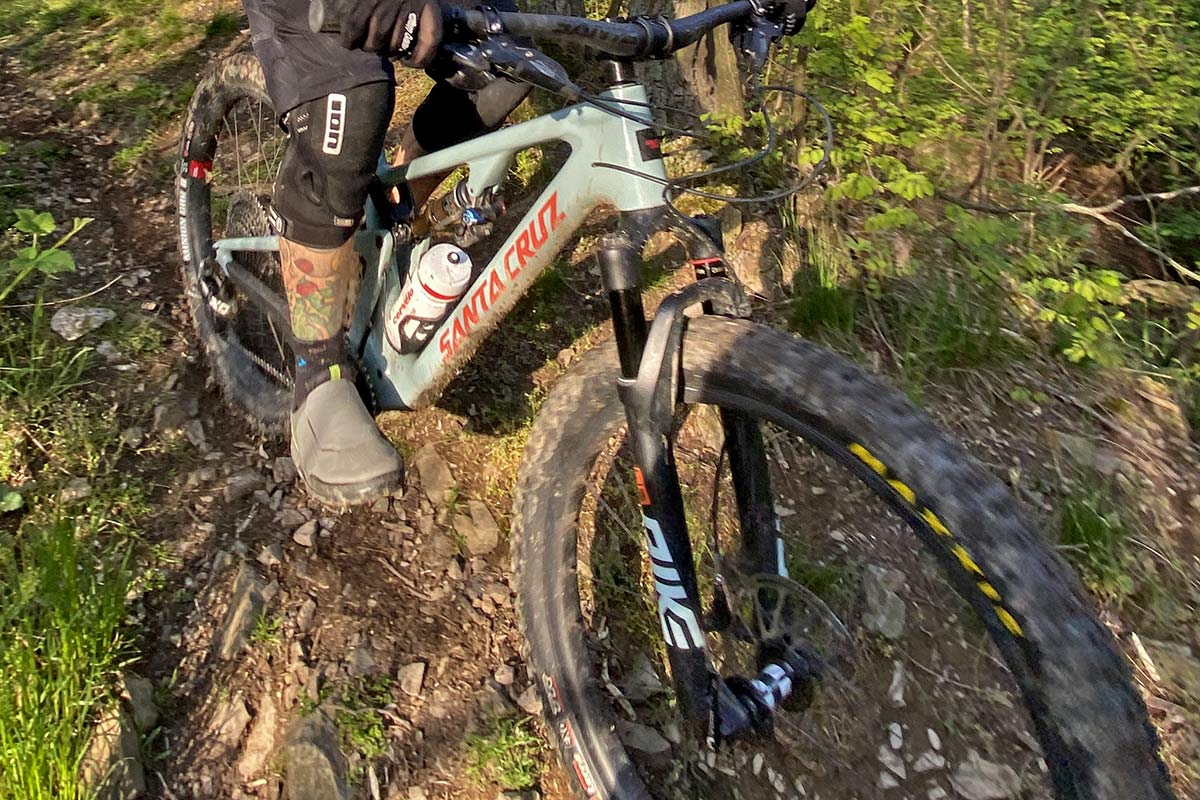Upstart tech company Rover‘s lightweight wireless PSIcle tire pressure sensors let you track exactly how much air is in your tires with your phone, to an almost unbelievable level of accuracy. We’ve seen a growing number of tire pressure monitoring systems recently, and were curious to put some to the test. Unlike many other options, PSIcle simply threads into almost any tube or tubeless-valve, and needs no battery since it’s powered by your phone’s NFC connection…
Rover PSIcle lightweight NFC tire pressure sensors (TPMS)
With the performance benefits of dialing in perfect tire pressure well established now – maximizing on & off-road grip, while minimizing rolling resistance and reducing flats – once you’ve figured out what’s your ideal setup, the trick is keeping it. No matter what tire/tube/tubeless system you use, the air pressure inside your tire seems to always decrease a bit over time. While it’s simple enough to manage with a floor pump before your ride, these small Rover PSIcle sensors simply take the guesswork out of the equation.
Lean your NFC-equipped smartphone against the sensor on the valve and it displays the exact pressure in your tire, down to the hundredth PSI.
How do they work?
The Rover PSIcle is essentially just an alloy valve extender with a small cutout that connects its MEMS pressure sensor to the air volume inside your tire. It’s exactly the same tech that’s in your car tire’s TPMS sensors, your smartphone, smartwatch or GPS’s onboard barometer, and it’s the same tech in a Quarq TyreWiz or Tubolito PSENS smart tube. The trick is that Rover made it more compact & energy efficient, and compatible with both tubes AND tubeless!
Just like the PSENS (which as a startup, Rover admits, was a nice proof-of-concept to reassure potential buyers), the PSIcle is powered by Near Field Communication – so no batteries required. Just put your NFC-equipped Android or iOS smartphone right next to the sensor on the valve, and voila instant & precise tire pressure readouts!
Tech details
The PSIcle comes in two variants Low-Pressure (LP) for off-road with a 0-40psi range and almost incomprehensible +/- 0.06psi accuracy, or High-Pressure (HP) for on & off-road use 0-400psi still with +/- 0.7psi accuracy.
Our prototype samples use a 3D-printed casing over the embedded electronics & alloy extension. With a sensor diameter of 21mm and ~7mm thick, the whole setup is just 13mm thick including the valve extension body. Production PSIcle sensors will get a molded EPDM rubber casing that may add an extra millimeter in each direction to secure and protect the sensor, on top of the machined aluminum valve extension. Weight is expected to stay at just 5g apiece, 10g for the pair.
The patent-pending & IP67 waterproof PSIcle design & electronics are all complete (as we’ve tested it below). Now Rover is waiting for successful crowdfunding before they build out the production circuits, final mold, and begin production in China & Taiwan.
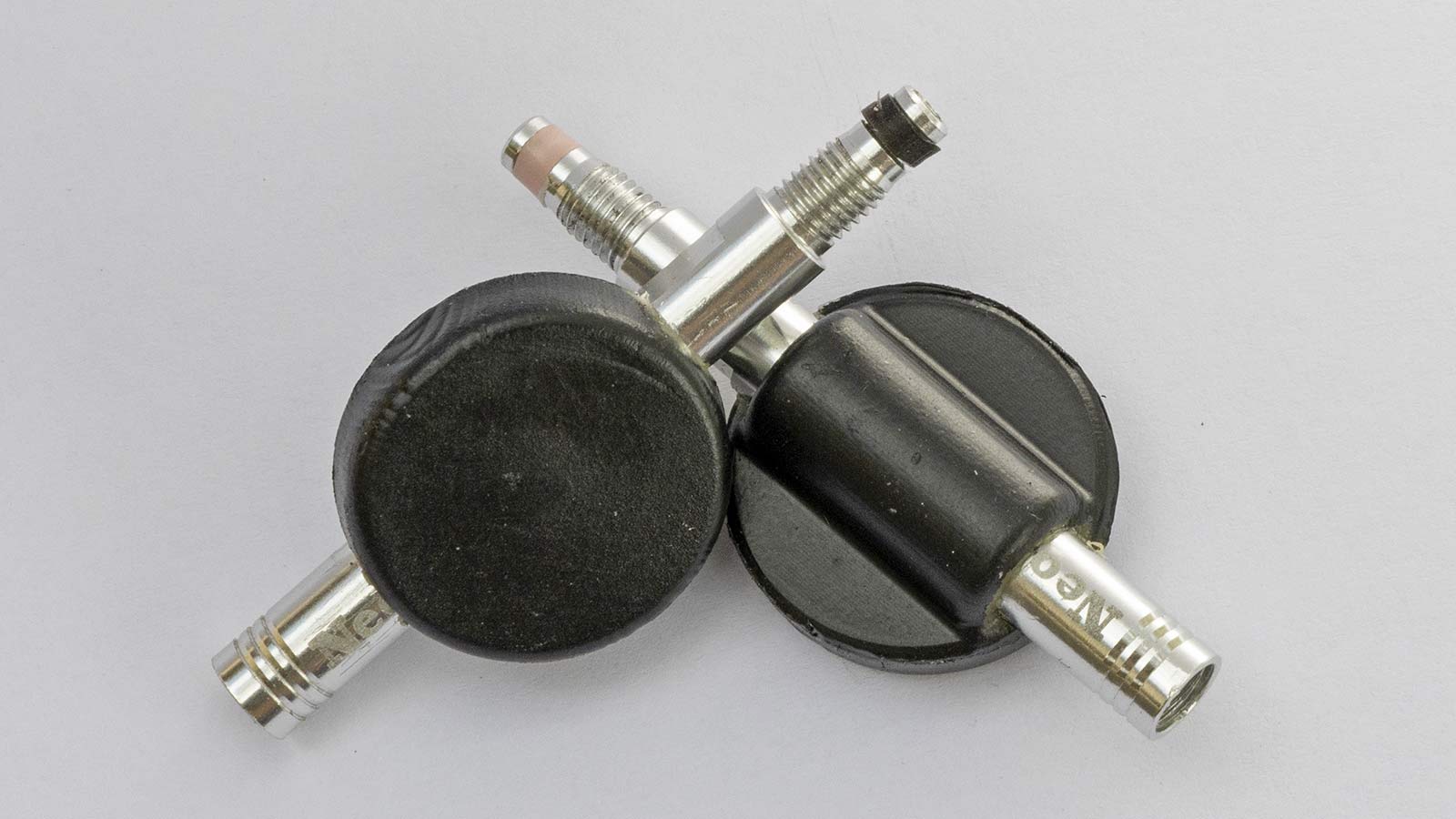
Rover explains that they’ve designed PSIcle for minimum 5-year life on the road. Off-road riding lifespan should be the same as repeated shocks aren’t the concern. It seems more that direct impacts from rocks, sticks & other trail debris could break the sensor just like they would damage a wheel. With molded EPDM rubber over the aluminum extensions, Rover expects similar durability to a car’s Schraeder valve.
Who is Rover Development & what do they know?
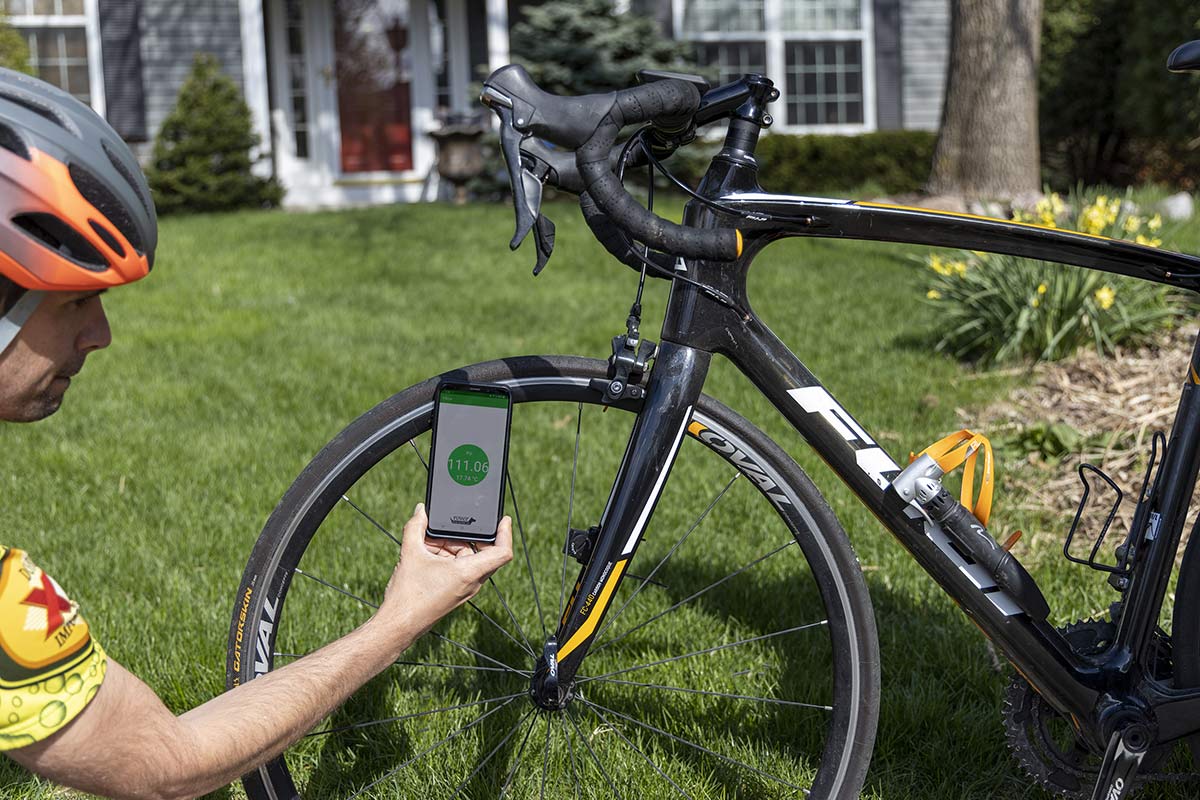
Rover is a small startup, new to the cycling industry. But their team comes with more than six decades combined experience designing, developing, and manufacturing medical devices and industrial sensors using similar technologies. They are also active cyclists, but are more about riding for fun than making incremental racing performance gains. Founding engineer Chris Larsen described his use of the PSIcle more as a convenience than a performance booster…
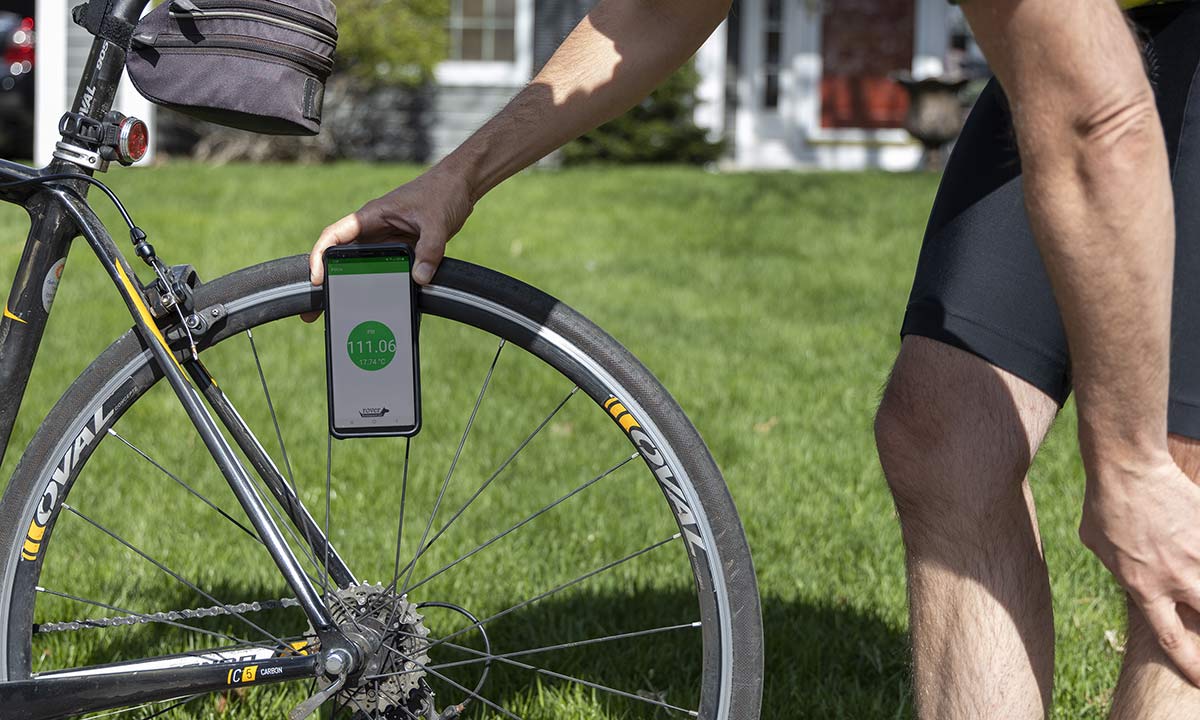
“Proper pressure makes my rides easier, and the quick check I get with the sensor gets me out the door faster… I find that I can’t really tell the difference between 85 and 110 psi by pinching my tires, so if I wanted a comfortable and efficient ride, I would hook up my pump to check the pressure. Then the pump deflates the tire a bit, so then I have to put a few pumps back in. Using the PSIcle sensor only saves me that handful of seconds every day, but it just gets me into the flow of my ride so much faster.“
Exclusive (P)Review: Tracking all-road & MTB tire pressures with the PSIcle
We got an exclusive chance to test out some preproduction prototype PSIcle tire pressure sensors to get a feel for how easy they are to set up, use, and get addicted to. And as a whole, our preview has been almost entirely positive & trouble-free.
The biggest thing we noticed was just how surprisingly accurate the reporting was from the PSIcle tire pressure sensor, allowing us to see tiny pressure losses that you could never really quantify without something like this.
Watching an enduro tire pressure numbers drop from 18.80 to 18.54 to 18.42psi over three days seemed like a lot, until we realized that no pressure gauge we use could register a 0.38psi change without losing that much or more air, and you definitely couldn’t simply feel the difference.
(Of note: To get the most accuracy, your phone also needs its own onboard barometric pressure sensor. Otherwise, accuracy could come down to at worst +/- 1psi as you change elevation or weather shifts. We’ve not seen a significant impact yet though.)
We actually noticed bigger air loss difference in a similar timeframe on an older, slightly abused alloy rim and all-road tire setup. There, the change was still not possible to detect by feel, but now gives us a better way to keep an eye on the pressure drop. Seeing that air loss so clearly, I was a little worried it could result from the leaking at the valve itself.
My only real concern in setup was properly aligning the PSIcle tire pressure sensor in-plane with the wheel so it wasn’t like a micro sail in the wind every time the wheel spins. Rover told us that the seal type on the extension allows enough flexibility to unthread the valve up to 1/4 turn if fully tightening doesn’t align it perfectly without losing air. I wasn’t so comfortable with that, but figure I could add teflon tape to the extension threads if needed to dial it in more precisely.
In the end, on both our road & mountain tubeless setups, the tubeless valves are round inside the rim, so we could tighten the PSIcle onto the tubeless valve, then rotate to align it perfectly. Problem solved, but it won’t help those who use PSIcle with inner tubes.
Rover hasn’t really looked at the aerodynamic drag implications of their PSIcle, only noting that it will certainly be less than more bulky solutions like TyreWiz. But if you align it properly, we suspect it would have negligible impact
My only real long-term concern remains the impact of dry latex sealant in the valve extension. Rover assures us that in testing, the internal sensor works even when covered by latex, but still recommends not to add sealant through their valve. So far, we’ve not seen any loss in sensitivity in either tubeless setup (with Stan’s), but we’ve only been testing for a couple of weeks so far.
Our final takeaway so far is just that being able to precisely check tire pressure before a ride is great. For technical mountain biking it’s great to be able to get this level of accuracy, and I imagine it will be equally useful for gravel, cyclocross, or fat biking. On the road it’s just been useful to track regular air loss, either with lightweight tubeless tires or latex tubes.
At something like $25 & 5g per wheel, we could see these as a great tool on any one of our bikes. No batteries and the ability to transfer it from one bike or tire setup to the next is just icing on the cake.
PSIcle tire pressure monitors: Kickstarter Pricing & expected availability
https://www.kickstarter.com/projects/roverdev/psicle-sensor
Rover opened their Kickstarter crowdfunding campaign today with the first Earlybird 100 pairs of PSIcles available for $52.
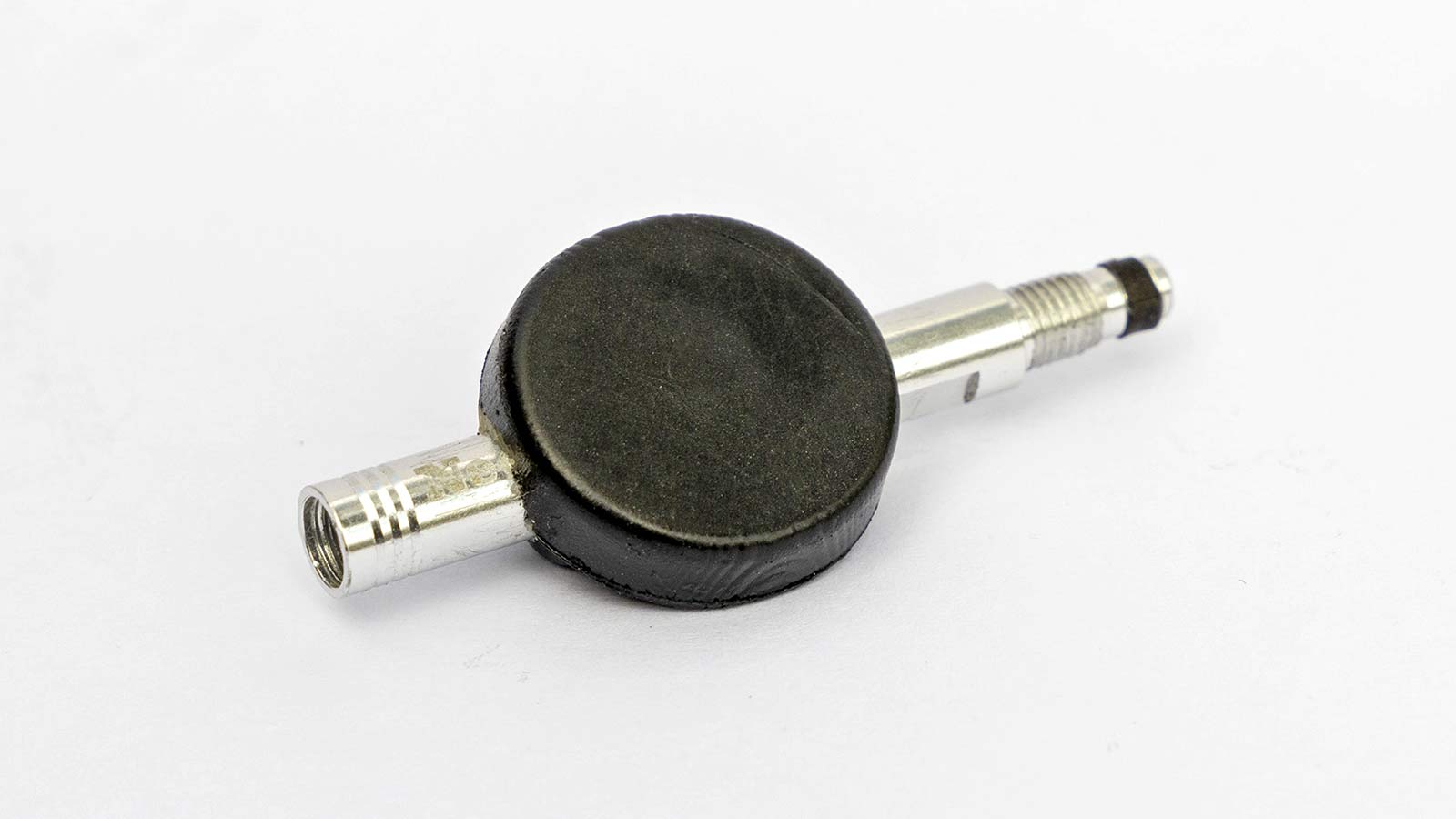
After that crowdfunding a pair will cost $56 now through the end of June. Rover is offering them individually, in LP or HP pairs, or a set of four – both low LP & high HP versions together.
But act fast to start tracking your tire pressure soon, because those Earlybird sets are expected to deliver in September, with the remaining sensors arriving in November 2021. After crowdfund backers get their PSIcles, Rover will offer them directly from their own website and possibly also via Amazon. Global shipping could tack on up to $16 more, which is one reason Rover hopes to refine distribution over the summer.
